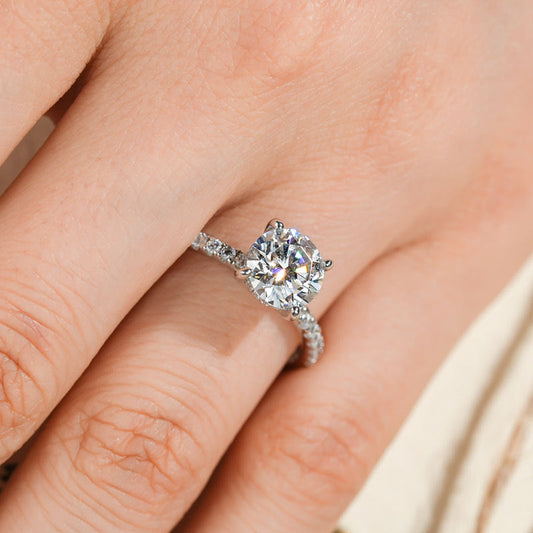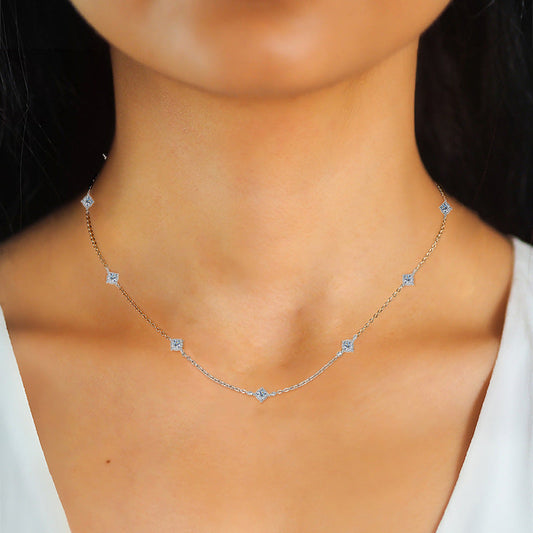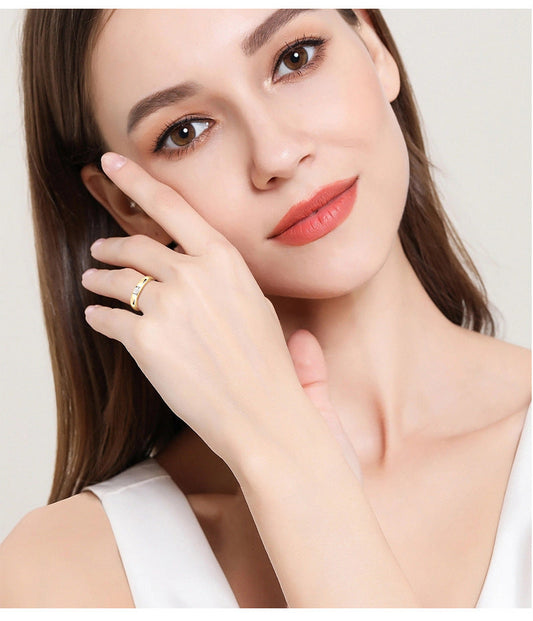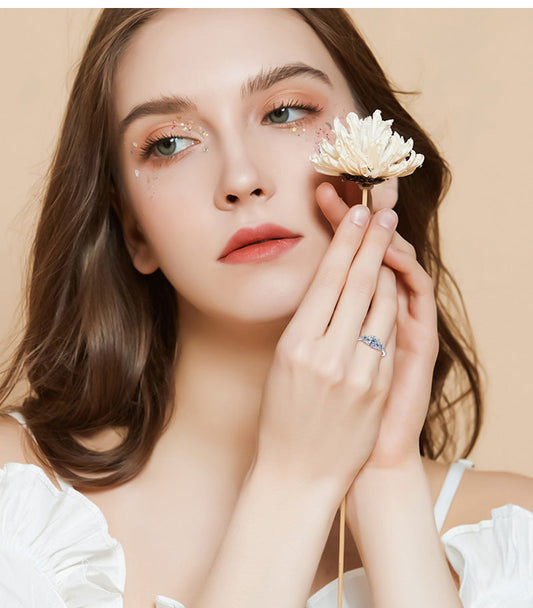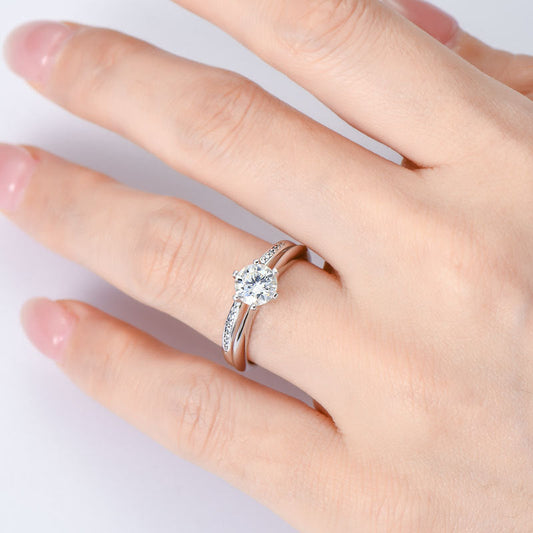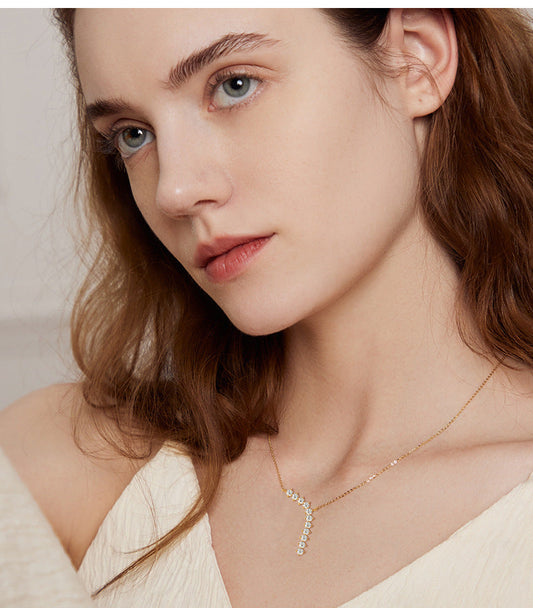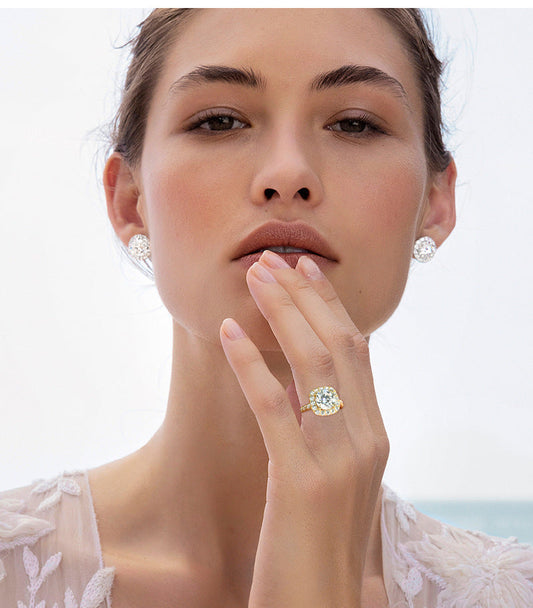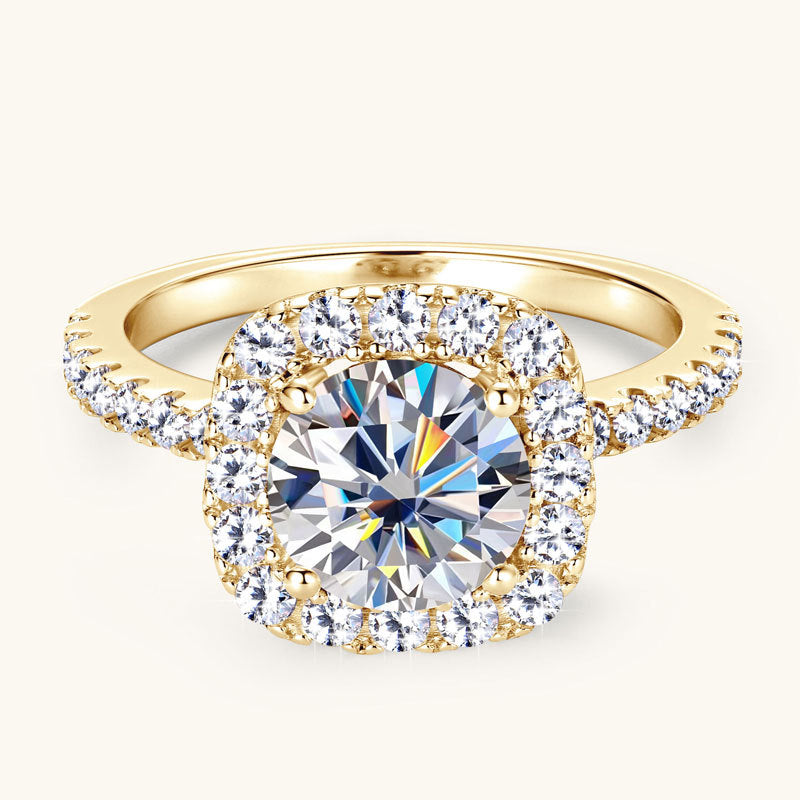
Moissanite vs. Diamond: The Ultimate Guide for Modern Jewelry Lovers
Introduction: The Sparkle Debate That Shines Everywhere
For centuries, diamonds have been the symbol of status, romance, and lasting beauty. They are prominently featured in engagement rings, heirlooms, and luxury jewelry. But as the world grows more aware of ethical sourcing and budget-conscious luxury, another gemstone has entered the spotlight: moissanite.
At ASN Moissa, we call it “Flawless Conscience, Flawless Fire.” Moissanite offers the brilliance and durability luxury lovers crave—without the price tag or ethical baggage often tied to diamonds.
But how do moissanite and diamonds truly compare? In this comprehensive guide, we’ll put them side by side, examining everything from sparkle to sustainability, and help you decide what modern luxury really means for you.
Keywords to include: moissanite vs diamond, ethical engagement rings, affordable moissanite jewelry, sustainable alternatives to diamonds, ASN Moissa collections, brilliance comparison, modern luxury jewelry
History and Origins: From Earth to Stars
Diamonds: A Tale of Earth’s Treasure
Diamonds form deep underground over billions of years under immense pressure and heat. They are mined from regions in Africa, Russia, and Canada, and for decades have been promoted as “a girl’s best friend.” Marketing campaigns cemented diamonds as the ultimate luxury gift—especially for engagements.
Moissanite: A Star-Born Gemstone
In contrast, moissanite was first discovered in a meteor crater in 1893 by French scientist Henri Moissan. He identified tiny crystals that looked like diamonds but sparkled with even more brilliance. Because natural moissanite is incredibly rare on Earth, modern moissanite is skillfully lab-created, making it both traceable and sustainable.
💡 Quick fact: When you wear a moissanite ring from ASN Moissa, like the Eternal Radiance 4 Carat Cushion Halo Ring, you’re literally wearing a gem with cosmic origins.
Brilliance and Fire: Which Sparkles More?
When it comes to dazzle, sparkle is king. Here’s how they compare:
- Diamonds: Known for their clear white brilliance, diamonds reflect light with elegance but a relatively smaller spectrum of color.
- Moissanite: With a higher refractive index (2.65–2.69 vs. diamond’s 2.42), moissanite flashes a rainbow-like fire under natural and artificial light.
That means moissanite often appears brighter and more colorful than diamonds, catching the attention of admirers everywhere.
If you’re someone who loves jewelry that draws compliments, moissanite studs like the ASN HexaSpark Earrings or Trilight Elegance Ring may surprise you with their head-turning brilliance.
Durability: Can Moissanite Last a Lifetime?
On the Mohs hardness scale (1–10):
- Diamond: 10 (hardest known material)
- Moissanite: 9.25 (extremely durable)
While diamonds are slightly tougher, moissanite is resistant to scratching, chipping, and heat. For daily wear in rings, bracelets, and necklaces, moissanite is more than durable enough to last for generations.
💎 Think of moissanite as the practical balance between brilliance and durability—ideal for engagement rings and heirloom-worthy jewelry.
Price Comparison: Affordable Luxury Without Sacrifice
This is one of the categories where moissanite shines brightest.
- Diamonds: A one-carat diamond can cost anywhere from $3,000 to $10,000+, depending on clarity, cut, and origin.
- Moissanite: A similar one-carat moissanite often costs between $300 and $600.
That’s up to 90% savings—allowing jewelry lovers to choose larger, more elaborate designs without overspending. With ASN Moissa’s buy 2 get 1 free promotions, affordability and sparkle have never blended so perfectly.
💡 Example: Instead of one modest diamond ring, customers can explore sets like the ASN Aurora Moissanite Ring Set plus a pair of moissanite earrings for less than the cost of a single diamond band.
Ethical and Environmental Impact
This is where the heart of the debate truly lies:
- Diamonds: Despite reforms and certifications (like the Kimberley Process), diamond mining still raises concerns about conflict funding, community exploitation, and severe environmental destruction from mining operations.
-
Moissanite: Every gemstone is lab-created under ethical, controlled conditions. This ensures:
- No link to conflict regions
- Minimal ecological footprint (no heavy mining or disrupted ecosystems)
- Guaranteed traceability from lab to jewelry box
For those seeking ethical engagement rings or sustainable alternatives, moissanite is the clear champion.
Style Versatility: Which Offers More Options?
Both gemstones are extremely versatile, but moissanite allows flexibility thanks to affordability.
- Classic solitaire rings: Both look stunning, but moissanite is more budget-friendly for higher carat sizes.
- Halo and pavé settings: Moissanite’s fiery brilliance especially shines in designs like ASN Moissa’s Starlight Symphony Tennis Bracelet.
- Color options: Diamonds are traditionally white or rare fancy colors, while moissanite can be created in colorless, near-colorless, or slightly warmer tones. Specialized designs like the ASN Ocean Whisper Blue Moissanite Earrings highlight moissanite’s versatility.
Social Perception and Symbolism
For many, diamonds carry legacy symbolism: luxury, commitment, and “forever.” But modern buyers care increasingly about values over tradition.
Moissanite represents:
- Innovation (lab-grown brilliance)
- Conscious living (ethics and sustainability)
- Accessibility (luxury for everyone, not only the wealthy)
Engagement rings like ASN Moissa’s Classic Eternity Band allow couples to symbolize eternal love without compromising conscience.
Real Voices: Why Customers Choose Moissanite
Many ASN Moissa customers echo the same feelings:
- “The sparkle is unreal—people keep asking if it’s a diamond!” — Jessica L.
- “Ethical, affordable, and absolutely gorgeous. What more could I ask for?” — T. Ramos
This feedback underlines the growing shift toward moissanite—not as a compromise but as a preferred gemstone for everyday and milestone jewelry.
Choosing What’s Right for You
Go Diamond If…
- You want traditional status symbols tied to rarity.
- Price is not a concern.
- You value classic white brilliance with cultural legacy.
Go Moissanite If…
- You want maximum sparkle and brilliance (with rainbow-like fire).
- You prefer sustainable, ethical, and eco-friendly jewelry.
- You’d rather invest in affordable luxury jewelry without sacrificing durability.
Ultimately, the best choice comes down to personal values and priorities.
ASN Moissa’s Role in This Sparkle Revolution
At ASN Moissa, our mission is to provide jewelry lovers with a brilliant, ethical alternative that embodies:
- Exceptional designs (from radiant halo rings to delicate teardrop pendants)
- Uncompromising ethics (lab-created moissanite in every collection)
- Accessible luxury (fair pricing + global free shipping offers)
From daily sparkle studs like HexaSpark to show-stopping engagement rings like Eternal Radiance, ASN Moissa makes sure jewelry is not just beautiful but also meaningful.
Conclusion: The Future Belongs to Moissanite
The debate between moissanite and diamonds isn’t just about gemstones—it’s about values, vision, and evolving ideas of luxury.
Diamonds may carry centuries of cultural weight, but moissanite carries the future of fine jewelry: dazzling brilliance, unmatched ethical value, and affordability for all.
If you’re searching for sparkle that feels as good as it looks, moissanite isn’t the alternative anymore—it’s the new standard.
✨ Discover for yourself: explore ASN Moissa’s ethical moissanite jewelry collection, and embrace brilliance with both fire and conscience.
